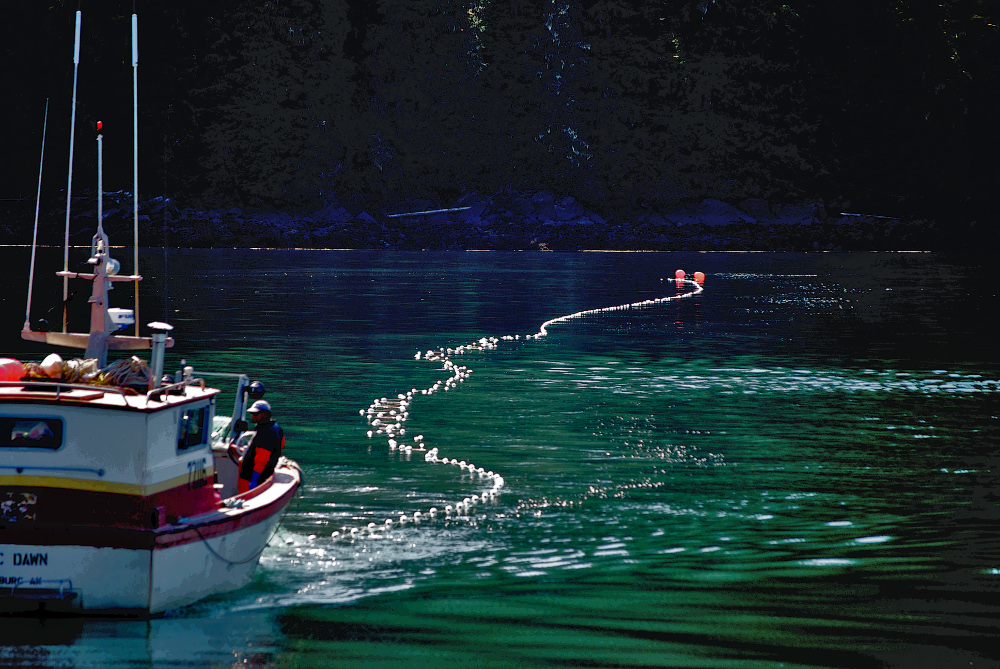
Commercial net fishing for salmon in Southeast is off to a poor start in much of the region. Returns of most species are not meeting forecasts, which weren’t very high in the first place.
With some exceptions, it hasn’t been a very encouraging start to the salmon season.
“I guess for both net fisheries, gillnet and seine, we’re looking at poor chum salmon catches, and poor sockeye catches and yet to be determined for pink salmon,” said Troy Thynes, the Alaska Department of Fish and Game’s management coordinator for commercial fisheries in the region.
By the middle of July, the region’s pink salmon catch neared 600,000 fish, still a far cry from the pre-season forecast of 28 million humpies with the bulk of the season still to come. Thynes explained indicators have been mixed on whether returns later this summer will meet that, with some up and down fishing in southern Southeast near Ketchikan.
“There was some good pink catches that showed up in lower Clarence (Strait) a couple weeks ago and then the pink catches kind of fell off,” he said. “And then they picked up again here this last opening in districts one and two. We are seeing a higher percent males than what we normally see this time of year which is generally indicates that the run is coming in a little bit later than normal and we have been seeing a low average weight on the pink salmon as well.”
Smaller size for individual fish can sometimes signal a larger overall return and managers are hopeful the 28 million harvest forecast for the region is still a possibility. They’ll know more in the next few weeks, heading into what’s normally the peak of the pink season. Pinks are targeted by the region’s purse seine fleet, which is having 15-hour openings on Thursdays and Sundays in the early season. Most of the focus is around Ketchikan and Prince of Wales Island, with many permit holders not out fishing.
In the past, hatchery chum salmon have filled in a gap for seiners and taken pressure off wild pink stocks. In recent years that hasn’t been the case. The Northern Southeast Regional Aquaculture Association produces some of those chums around Sitka, Kake and Petersburg. NSRAA general manager Scott Wagner called chum salmon returns miserable.
“Well it’s just a continuation of last year and the terrible return last year. Whatever widespread issue out in the Gulf (of Alaska) is causing all species of salmon but particularly chum to do very poorly,” Wagner said.
There’s been no fishing this season around the Hidden Falls Hatchery on Baranof Island because of a low forecast. There have been openings at Southeast Cove near Kake and Thomas Bay near Petersburg, but catches have been poor.
Wagner said chum are smaller than normal this year, and he does not expect early summer chum will hit the low end of forecasts at any of NSRAA’s sites.
“So that’s discouraging,” Wagner said. “You know we’re about halfway through the return and particularly Thomas Bay and Southeast Cove are performing very poorly. Gunnuk Creek, it’s our first return to the hatchery there with four year olds and it’s looking better. You know we’re seeing about half of our broodstock needs right now, about 10,000 fish which is encouraging but not what we forecasted. Same thing at Hidden Falls, it’s looking slow again and likely come in under forecast. We are just now starting to see some schools move into the bay.”
Gunnuk Creek is NSRAA’s chum hatchery in Kake. The regionwide chum catch topped 700,000 by the middle of July. All of Southeast’s hatcheries combined forecast a total of nine and a half million dogs for 2021.
There have been some better catches of chum for gillnetters closer to Juneau and in Lynn Canal.
In the central part of the region, the drift gillnet fleet has seen one area remain closed for the first part of the season. Fish and Game’s Thynes explained managers have kept district 8 around the Stikine River near Petersburg and Wrangell closed for multiple species.
“It was closed initially for chinook salmon conservation but it’s also been closed for sockeye salmon,” Thynes said. “We weren’t expecting a large return of Stikine River sockeye this year and as a result district 8 has kept closed because of that. So we haven’t had any indications in our district 6 drift gillnet fishery that the Stikine run is coming in larger than forecasted so district 8 has remained closed.”
District 6 near is Zarembo and northern Prince of Wales Island has seen openings for gillnetters. The Stikine River forecast going into the season was 56,000 sockeye, well below average and similar to what came back in 2020. This year the run may not even meet that poor a forecast.
There are a few better showings of sockeye numbers elsewhere in the region, at Redoubt Bay near Sitka and on the Situk River in Yakutat. Thynes says it’s still too early to know the strength of sockeye on the Taku, Chilkat and Chilkoot rivers. Some of those saw high water levels from a big snow pack to start off the summer.
“You know if anything I would say it slowed at least the chinook and sockeye heading up the big mainland rivers being the Stikine and Taku,” Thynes said.
Gillnetters are having openings from two to four days depending on the area with the bulk of the fleet focusing on district 11 near Juneau and district 15 in Lynn Canal.











